
What is Pitch Recognition Softball Part 1
Hitting Is Impossible Softball hitting coaches love to say, “Hitting is hard.” I’m here to tell you that hitting isn’t hard. It’s impossible. Human vision

Hitting Is Impossible Softball hitting coaches love to say, “Hitting is hard.” I’m here to tell you that hitting isn’t hard. It’s impossible. Human vision

Hitting Is Impossible Baseball hitting coaches love to say, “Hitting is hard.” I’m here to tell you that hitting isn’t hard. It’s impossible. Human vision
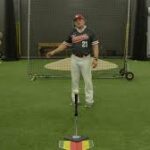
At high levels of baseball pitchers are not only adding speed to their pitches but also “designing” their breaking pitches to move in more extreme and unpredictable ways. The best way for hitters to combat pitch design and velocity is by recognizing pitches as early as possible.

Virtual Reality is cool, but it’s not useful for training pitch recognition… It could even be harmful.

Listen to what our customers have to say about GameSense.

Hear what Jerry Weinstein, Troy Silva, JJ Cooper and others have to say about GameSense and pitch recognition.

Teams in the NFL and other leagues believe performance on a tablet can predict success in the real game. By Devin Gordon Sept. 2, 2020 34
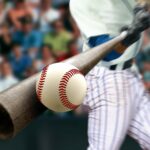
Eric Rynston-Lobel, a young journalism student at Northwestern University recently published an interesting article, “Hitting a baseball is the hardest skill to pull off in

Hello Softball family! I’m Coach Gentile or Coach Courtney. I am a former Division 1 softball coach and I am the Softball Director and

Coach’s Corner #TipTuesday We stand behind the real-world, on-the-field application of our products just as much as we stand behind the science and technology used
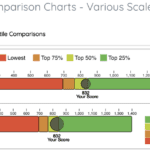
The gS SRTTM By Dr. Peter Fadde, Chief Science Officer, gameSense Sports A hitter’s statistics betray the symptoms of poor pitch recognition: strikeouts, low on-base percentage,

gameSense Sports is pleased to be part of the Inaugural Techstars SportsTech Accelerator class. To read the full press release, visit: https://www.techstars.com/newsroom/the-techstars-sportstech-melbourne-accelerator-inaugural-class. To learn more about the

Listen to the Audio Interview This week we had the honor of chatting with Len Zaichkowsky, PhD, retired Professor from the Boston University, World-class’ sports
Researchers at SIU Carbondale have developed new technology to improve high-speed decision making skills. Dr. Peter Fadde created Video-Occlusion, an alternative form of virtual or
https://www.youtube.com/watch?v=7mVSg4pul9g

gameSense Offers Minor Leaguers Free Access to Pitch-IQ App By Joe LemireMay 1, 2020 Pitch recognition app gameSense is offering minor leaguers free access to its

https://www.youtube.com/watch?v=Hhw6w289pAg&feature=youtu.be

https://youtu.be/Ndw1Wfxx6YI

In this episode of Ahead of the Curve, I welcome Dr. Peter Fadde, pitch recognition expert, Chief Officer and Co-Founder of gameSense, and Associate Professor
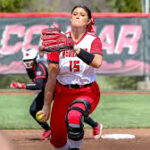
https://youtu.be/Odaa4OOQyGc

https://youtu.be/oS6g1vOhefw

https://www.youtube.com/watch?v=xn-UA_NwCl0

There’s no argument that a baseball batter’s ability to track an incoming pitch is critical to hitting performance but it’s the details of how his eyes perform that task that researchers are still figuring out. While previous studies have confirmed that expert hitters are better than novices at tracking a moving object, we still need to breakdown the process if we want to build better training tools for athletes.
A study released this month in PLOS ONE took a big step to understanding this visual perception of athletes.

https://youtu.be/C7fjGBuWVgU

https://youtu.be/Eu0W9ySY8YE

https://youtu.be/QSWuxH_61Aw How to setup and use gameSense Hit Station Output gameSense app from computer or iPad/iPhone to a TV or a video projector. Use the
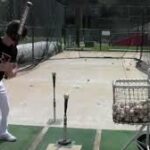
Baseball Hitting Drill – 2 Ball Toss Baseball Drill This 2 ball feed hitting drill helps with the proper reaction to the incoming pitch. A
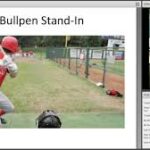
Hitting Drills For Baseball And Results In this video Dr. Peter Fadde and Dillon Lawson discuss some hitting drills using video occlusion principle. Peter Fadde

Click here to Read the Entire Article GameSense sports is a technology company that has developed an app for baseball and softball that measures and teaches

by Geoff Rottmayer (Feb 2019 (52 min) Dr. Peter Fadde, co-founder of Game Sense Sports Pitch Recognition software and author of the ebook “The 6th Tool:
Patrick Jones Baseball. Patrick, who recently joined the Baltimore Orioles as a minor league hitting coach, interviews gameSense Sports’ co-founder Dr. Peter Fadde on his

https://www.youtube.com/watch?v=B7jFJDRIces&t=2s
Pitch Recognition Hitting Drills 2 Tee Hitting Drill gameSense Hit Station Output gameSense app from computer or iPad/iPhone to a TV or a video projector.
gS Video-Occlusion Method: Watch pitches that are cut off during ball flight; identify pitch TYPE and BALL/STRIKE. DRILLS Players select a pitcher and choose RHB
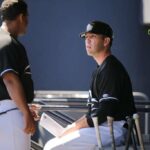
In January 2015, Dillon Lawson stood on stage at the American Baseball Coaches Association convention in Orlando, Florida, and delivered a 35-minute presentation on the
This is the third story in a five-part series that examines how swing biomechanics and the proliferation of technological tools are helping hitters. Modern technology

If you get jammed on the cutter or two-seam, the reason is because the pitcher is doing a better job of locating his pitch than you are at fighting to get to the innner-half of the ball.

Starters Sports Training will team up with gameSense Sports to bring pitch recognition software solutions to Starters’ baseball and softball players. “We are extremely excited
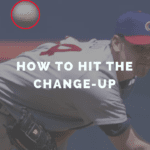
It’s game day. You show up the field.
Pregame B.P. Done.
Pre-Game Warm Up. Done.
Go back to the club house. Put on the game uniform.
Now you’re in the dugout. You look at the line-up.
You’re not hitting in the spot you notmally hit.
You’re not playing the position you normally play.
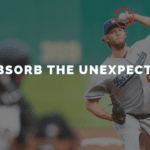
It’s game day. You show up the field.
Pregame B.P. Done.
Pre-Game Warm Up. Done.
Go back to the club house. Put on the game uniform.
Now you’re in the dugout. You look at the line-up.
You’re not hitting in the spot you notmally hit.
You’re not playing the position you normally play.
Growing up on Long Island, about 25 miles east of New York City, Eugene Bleecker took 10 years of lessons at a local baseball camp. He went on to play college baseball, catching for four Division II, NAIA, and NJCAA schools over five years with what he calls “very old-school” mechanics. When he started his coaching career, Bleecker taught the same drills and preached the same philosophies that he had learned in his youth.
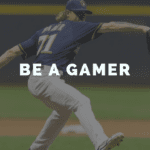
Popping out in foul territory. Striking out looking. Swinging and missing on a hanging breaking ball. Being late on an 0-2 fastball…
…these are hands down some of the worst feelings in baseball, for hitters.
Take the “IF” out of your swing. Tips From Steve Springer
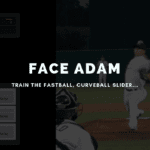
Why you struggle with two strikes at the plate.
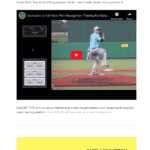
Why is it that when a hitter struggles, the first thing we do is try to change the swing, approach or bat? How often do we ask, “are you SEEING the ball effectively?”
If you’re not seeing the ball out of the pitcher’s hand, you’re shootin yourself in the foot. When you’re confident, you’re seeing the ball well.
Hitting is about confidence, so let’s make sure we have a plan to pick up the pitch effectively.
Take a peek at the occlusion training. Anticipate the pitch. Pick ball or strike, type of pitch THEN check to see if you’re right with the full version REPLAY.

Vision Skills: Two strike hitting practice. Harder than it looks. Easier when you train it.

When you’re trying to work yourself into the line-up, there are a few things you can do.
One of them is playing good defense.
A good glove keeps you in the line-up and on the field.
But there are a few other things that a hitter can leverage to give themselves a chance to contrinute more to the team.
Coach Mongero lays it out in about 20 seconds in this video.

Hitting is a split second decision period.
You have to recognize pitch type, ball or a strike, react accordingly and THEN hope that your mechanics are on point and your approach is correct.
No wonder hitting is the hardest thing to do in all of sports.
And like our boy Steve Springer says:
“Baseball is the biggest self-esteem destroying sport in the world” – Steve Springer
We agree.
This is why hitters are using every tool and advantage to gain that edge.
This is also why we’re excited to launch the HIT STATION.
Our newest gameSense pitch recognition training feature.
When you log in and click on Hit Station, you’ll be presented with a simulation pitch sequence.
You anticipate the type of pitch, ball or strike and then receive direct feedback.
It’s a perfect way to incorporate it into your actual batting practice session with a bat in your hand.

Hitting is a split second decision period.
You have to recognize pitch type, ball or a strike, react accordingly and THEN hope that your mechanics are on point and your approach is correct.
No wonder hitting is the hardest thing to do in all of sports.
And like our boy Steve Springer says:
“Baseball is the biggest self-esteem destroying sport in the world” – Steve Springer
We agree.
This is why hitters are using every tool and advantage to gain that edge.
This is also why we’re excited to launch the HIT STATION.
Our newest gameSense pitch recognition training feature.
When you log in and click on Hit Station, you’ll be presented with a simulation pitch sequence.
You anticipate the type of pitch, ball or strike and then receive direct feedback.
It’s a perfect way to incorporate it into your actual batting practice session with a bat in your hand.

We put hours in the cage to refine the swing.
We put hours in the gym to develop explosive power and bat-speed.
We get the pitch recognition part right, the refined swing and the explosive power translate better.
Period.
This is why hitting instructors, top baseball programs and the individual player who’s willing to take their development as a hitter in their own hands are taking their vision skills and pitch recognition training to a whole new level.
Come take a look and see how some of these players are utilizing the training as part of their hitting stations during B.P.

We put hours in the cage to refine the swing.
We put hours in the gym to develop explosive power and bat-speed.
We get the pitch recognition part right, the refined swing and the explosive power translate better.
Period.
This is why hitting instructors, top baseball programs and the individual player who’s willing to take their development as a hitter in their own hands are taking their vision skills and pitch recognition training to a whole new level.
Come take a look and see how some of these players are utilizing the training as part of their hitting stations during B.P.

Coach Trent Mongero @trentmongero (Founder of Winning Baseball & Dirt Bros) shares his 3 main pillars of being a solid hitter, what it looks like and what we should work on if there are weaknesses in our skills and approach.
”As the game speeds up, we have to be able to reognize quality pitches. We have to swing at strikes.”
He has a growing Youtube Channel that you should definitely subscribe to as well.
In this video, he’s going to share strategies that professionals use to see the ball as early as possible.
Out of the 3 main pillars, what would you say you need to work on?

So you wanna see the ball better, eh?
No, seriously…do you? I mean I know you signed up to the newsletter to train your pitch recognition but it’s early and a humpday sooo…just askin.
Yes? Okay sweet. We have just the thing for you.
Coach Trent Mongero, Founder of Winning Baseball & Dirt Bros) break down his process of seeing the ball as best as possible.
Coach Mongero is a true expert, loves teaching what he knows, always prepared to learn more…
…and seriously, it shows.
He has a growing Youtube Channel that you should definitely subscribe to as well.
In this video, he’s going to share strategies that professionals use to see the ball as early as possible.
You’ll learn about the importance of leveraging the soft focus & relaxation.
Improving the mental game–the next step in sports training– to become the Playmaker on the diamond.Coaches search for it. Parents dream of it. Fans love
Ballistically reactive sports performances such as blocking a soccer or hockey shot-on-goal, returning a tennis serve, and hitting a pitched baseball or bowled cricket ball
Facing a guy who’s gangly, throws from the side, hides the ball well, varies their release points from one pitch to the next…
….they’re no fun.
The only thing you can really do is to try slowing the game down by slowing down your feet and quieting your head.
Easier said than done. Sure but here’s exactly how to do it.
Facing a guy who’s gangly, throws from the side, hides the ball well, varies their release points from one pitch to the next…
….they’re no fun.
The only thing you can really do is to try slowing the game down by slowing down your feet and quieting your head.
Easier said than done. Sure but here’s exactly how to do it.
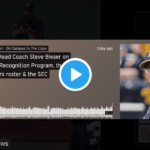
Facing a guy who’s gangly, throws from the side, hides the ball well, varies their release points from one pitch to the next…
….they’re no fun.
The only thing you can really do is to try slowing the game down by slowing down your feet and quieting your head.
Easier said than done. Sure but here’s exactly how to do it.
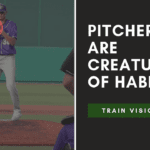
Facing a guy who’s gangly, throws from the side, hides the ball well, varies their release points from one pitch to the next…
….they’re no fun.
The only thing you can really do is to try slowing the game down by slowing down your feet and quieting your head.
Easier said than done. Sure but here’s exactly how to do it.
Facing a guy who’s gangly, throws from the side, hides the ball well, varies their release points from one pitch to the next…
….they’re no fun.
The only thing you can really do is to try slowing the game down by slowing down your feet and quieting your head.
Easier said than done. Sure but here’s exactly how to do it.
If you’re having trouble catching up to the fastball, ESPECIALLY the HIGH HEAT, it’s probably because of two things.
You’re not starting your load early enough. – Often times a hitter runs into trouble when they get to the point of contact too late because the’y’ve initiated their speration and stride way to late.
You have too much head movement – When the head moves the eyes moves. If you wanna make 90 mph look like 85mph, slow your feet and head down. If you wanna make 90 mph look like 95 mph…speed your feed up.
Here’s what you need to be thinking about.
You spend hours in the cage making sure you’re driving the fastball with calmness, toughness, and focus.
You work on hitting for a little more pop.
You work on driving the ball to the opposite field.
You’re ready because you put in the work.
You’re confident because you feel prepared.
The game starts…
…whoops!
You’re facing a guy who pitches off of his breaking pitch.
He starts at-bats off with a curve-ball.
He throws one in a 2-0 count.
Begin your Pitch Recognition & Vision Training w/ 30% off an annual membership here!
Many players get themselves into trouble at the plate because they’re simply not ready to hit.
They step in the batter’s box thinking, “if it’s a strike, I’m going to swing” instead “it’s going to be a strike right down the plate and I’m going to be ready”.
Begin your Pitch Recognition & Vision Training w/ 30% off an annual membership here!
Many players get themselves into trouble at the plate because they’re simply not ready to hit.
They step in the batter’s box thinking, “if it’s a strike, I’m going to swing” instead “it’s going to be a strike right down the plate and I’m going to be ready”.
Youth sports in America is a 15 billion dollar industry. A lot of that money is going towards special coaching and training and participation in elite
“He’s super innovative, but that doesn’t mean that he’s just throwing stuff against the wall to see what works. His technique is rooted in the
The abundance of innovations in team sports has changed the way games are played and managed. Don’t expect that to change anytime soon. For Coach
The abundance of innovations in team sports has changed the way games are played and managed. Don’t expect that to change anytime soon. For Coach
Dr. Peter Fadde made the first pitch recognition app that trains a hitter’s brain. gameSense, is showing a significant correlation between players who practice pitch recognition

The author of “The Playmaker’s Advantage” explains how teams in different sports evaluate players’ mental abilities in the modern age.
Mark Newman has watched a lot of baseball but he had never seen anything like this. “Over the twenty-six years, I was with the Yankees, we trained shortstops, at every level in the organization, to be there on that play,” Newman, the team’s recently retired senior vice president of player development, said in an engaging conversation. “[Derek Jeter] was. Many others weren’t. I’m not sure if he was trained any differently than the other twenty-five shortstops. His ability to pay attention, be in the moment, and respond to his environment was superior. That play’s an example of it.”
gS Pitch-IQ™ uses the proven video-occlusion method. Players view video clips of pitches that were shot from a batter’s box point-of-view. The pitch videos are cut off at different points of ball flight.
Pitch recognition is one of the hardest things to develop in players. The question is; how does gameSense make the process easier? Fadde explains how
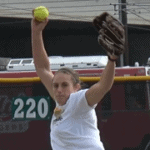
Listen to Dr. Fadde discuss pitch recognition and fastpitch softball

gameSense Sports continues to gain recognition in the sports world. The oft-told standard in baseball is that a 90-mile-per-hour fastball takes four-tenths of a second
Tigers head coach Steve Bieser was introduced to Dr. Peter Fadde’s product during his tenure at Southeast Missouri State University by hitting coach Dillon Lawson. The pair had embraced a “Moneyball” mentality in other ways — using sabermetric measures like runs created and weighted on-base average to build lineups — and their investment in plate-approach paid off.
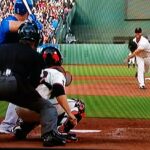
The mere act of hitting a ball is well beyond the normal realm of human perceptual cognitive decision-making, which is the process by which the brain combines the various types of sensory information it receives to decide how to behave.
Nestled in between the Mississippi River and the Mark Twain National Forrest is a HS at the heart of a revolution.
Dr. Fadde and gS getting some love.
Groenwegen gets batters to predict poorly. A game of milliseconds.
gS Pitch-IQ is named one of the best products at the ABCA convention
New pitch-recognition technology fuels Mizzou baseball’s hottest start in program history
Mizzou got off to a quick start and proven their place in future conversations
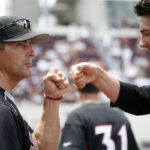
gS Pitch Recognition concepts helped SEMO take the next step. Bieser is not the only coach to emphasize PR. Mizzou is one of four teams
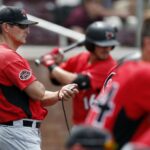
Steve Bieser, a big believer in Pitch Recognition Testing and Training, is upping the game at Mizzou
Northwestern researchers study the effects of jet lag on professional baseball players to find that home teams traveling eastward suffer the most.
gameSense Chief Science Officer talks about Expertise Training on the TED stage
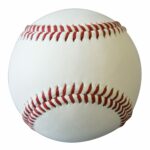
Hitters have a lot to think about when they’re at the plate. Game situation, pitch count, pitcher tendencies and even the last few at-bats. Picking out the fast ball versus the off-speed pitch is hard enough but what if a pitcher could vary not only his speed and location but also the ball’s backspin? The visual illusion of the rising fastball depends on backspin to counteract gravitational forces during the trajectory to the plate. So, playing with different backspins would directly affect the vertical dimension of the ball flight.
Researchers at Japan’s Waseda University designed an experiment to mess with a group of pro, semi-pro and college hitters by asking them to hit pitches with varying backspins but constant speeds. Their research appeared in the Journal of Applied Biomechanics.
gameSense Sports recently had the opportunity to work with the Cincinnati Reds during Spring Training.
If a batter is able to correctly predict the pitch type, his swing movement will be timed in unison with the pitcher’s throwing motion. Tomohisa Miyanishi and So Endo of the Graduate School of Sports Science at Japan’s Sendai University set out to actually measure the the correlation of the mirrored movements.
Do pitchers and non-pitchers all start with the same level of perceptual cognitive abilities, (i.e. the same “hardware”) and then diverge based on hours of deliberate practice (improving the “software” of the brain)? To find out, a team of researchers at Duke University dug into a treasure trove of data on over 500 baseball players who had been tested using the Nike Sensory Station (now Senaptec) between 2010 and 2014.
A new study from researchers in Japan digs deeper into understanding how hitters anticipate a pitch’s location and coordinate their body movements to be sure the sweet spot of the bat arrives on target and on time to connect.
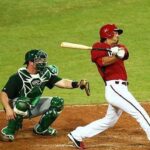
Most batters would prefer to face an opposite-hand (OH) pitcher, righty vs lefty and vice versa. With the dominance of right-handed pitchers in the game, the left-handed hitter comes to the plate with a built-in advantage. But what exactly is that advantage? What would happen if the pitcher population in the league was more balanced, righties to lefties? Two sets of researchers set out to dig a little deeper into this phenomenon of visual perception.
“Yeah, but will it transfer out to the field?” It is the most asked question about any type of sports training. Tools, techniques and technologies all seem logical in their theory and approach but the bottom line is, well, the bottom line. It’s no different in baseball. Coaches, parents and most of all players would like some empirical evidence that there is a transfer of learning from drills to statistical performance at the plate.
That’s why we were excited to see the results of a recent study, the first of two by Dr. Sean Müller and Dr. Peter Fadde, Co-Founder and Chief Science Officer at gameSense Sports, that found a significant link between the visual anticipation skills of hitters, also known as pitch recognition, and their actual statistical performance during a season.
A baseball hitter relies more on pitch information during the first third of ball flight than the final third. Nothing new there as coaches have been teaching pitch recognition that way for years. But sometimes a well-designed academic study comes along to confirm what may be obvious. That’s exactly what a group of Japanese sports scientists did earlier this year when they incorporated occlusion glasses, a pitching machine and a group of college baseball players.
When teaching a new motor skill or game tactic, coaches rely on their athletes being able to take what they learned in practice and apply it during a game despite multiple changes in the environment, emotions and minute by minute situations.
For baseball hitting instructors, this is especially true when teaching pitch recognition and plate discipline. Facing the same pitchers in batting practice every day doesn’t provide the breadth of delivery mechanisms and early ball flight cues that players will see from multiple pitchers during an entire season
For most baseball players, live batting practice (BP) provides the best time to work on pitch recognition, timing and swing mechanics. Typical pre-game BP sessions offer a couple dozen swings facing medium-speed pitches with the goal of warming up muscles and focusing vision to the ballpark lighting and background. During rare in-season team practices, hitting and fielding are often isolated training activities, except for the occasional scrimmage
Baseball players, like most athletes, are not emotionless robots. The pressure of the moment can affect their performance. Think of the pitcher-batter duels, where one team is one swing away from victory or defeat. The well-trained brain of the pitcher knows what to throw and the experienced batter knows what to expect.
Yet, athletes can’t always mask the stress they’re feeling, giving away possible cues to their opponent. Staring back at the pitcher, a hitter might be able to subconsciously detect fear or uncertainty which may help him predict the type, speed and location of the next pitch. That interaction is what Dr. Arik Cheshin of the University of Haifa wanted to understand.
Peter Fadde Ph.D., Chief Science Officer at gameSense Sports, has been on the front lines of pitch recognition science for over 20 years. Over the
Learning how to focus, or what others might call concentration or paying attention is a critical mental skill set for baseball players. When you are focused or “in the moment”, the game seems to slow down. Sport psychologists often call this “being in the zone” or in a “flow state”. On the other hand when you are not in the zone, the game feels like it is speeding up and you cannot keep up with the pace.
gameSense Dr Peter Fadde at American Baseball Coaches Association (ABCA) clinic
Perception & Action Podcast: Dr. Rob Gray interviews gameSports Dr. Fadde about Perception-Action Coupling, Part vs. Whole Training, and VR in sports. A discussion with
The goal of accelerating expertise can leave researchers and trainers in human factors, naturalistic decision making, sport science, and expertise studies concerned about seemingly insufficient
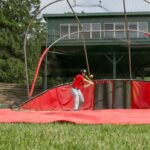
Local newspaper article on SEMO pitch recognition. Much more reader-friendly than a lot of the science talks and papers: Enjoy
It’s hard to hit a ball traveling at 90+mph. How is it even possible? Click on Link to find out how

It’s all about timing Click on Link to discover the importance of timing and hitting
“It’s OK to be Smart” takes on the fast Click on Link
Click here to read full paper

gameSense Sports Dr. Peter Fadde: “Game Changer or Digital Doorstop? Virtual Reality for Sports Training” In this Competitive Advantage talk Dr. Fadde gives the low
GameSense © 2025 | Privacy Policy | Terms Of Service | Contact us | Sitemap